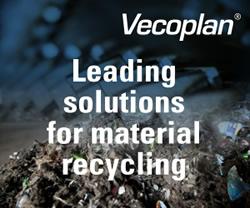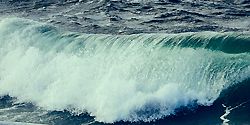Australia's Carnegie Wave Energy Project Sets World Record
Joshua S Hill for CleanTechnica: Australia’s Carnegie Wave Energy Project has set a new world record after completing 14,000 cumulative operating hours, the highest ever recorded.
The news was announced by the Australian Renewable Energy Agency (ARENA) this week, which provided $13.1 million in funding. The $40 million project uses CETO wave energy technology, and was the world’s first array of wave power generators to be connected to an electricity grid. For the past 12 months, the CETO 5 project has used an array of three offshore wave power generators to provide electricity and potable desalinated water to Australia’s largest naval base, HMAS Stirling, on Garden Island in Western Australia.
“ARENA is proud to help local companies, like [Carnegie Wave Energy Limited], develop new renewable energy solutions that have the potential to change the way the world generates electricity,” said ARENA CEO Ivor Frischknecht. “We do this by providing Australian innovators with the support they need during the critical RD&D period, when patient funding is essential.” Cont'd...
MacGregor winch expertise employed in innovative wave energy capture
The system is called NEMOS and it is ideally suited to work in combination with offshore wind farms, where it can share electrical infrastructure, which lowers the levelised cost of energy (LCOE), and smooth fluctuations in power-generation, therefore supporting greater commercial viability of renewable energy capture.
11th Annual Ocean Renewable Energy Conference Embarks on Second Decade of Leadership, Experience, and Solutions
OREC XI Set for Portland, Oregon September 21 and 22, 2016
This Device Could Provide a Third of America's Power
Sam Grobart for Bloomberg: There are 332,519,000 cubic miles of water on the planet. That's 352,670,000,000,000,000,000 gallons just sloshing around out there.
Anyone who's ridden or been tossed by a wave has a sense of the kinetic energy contained in our perpetually moving oceans. If we could harness it, it could provide a clean, renewable source of energy. But efforts to turn our oceans into power generators—often in the form of "aqua-mills," windmill technology adapted to water—have foundered on the complexity of their many moving parts in the corrosive and remote environs of the sea.
A new approach, developed by a company called Oscilla Power, applies all that kinetic energy to a solid piece of metal instead of using it to turn the blades of an impeller. That creates an alternating magnetic polarity in the metal that can be converted into electrical current.
Oscilla's technology, which is nearly solid-state, may prove far more durable than any other ocean-power project, increasing the chance to draw power from our oceans cleanly, meaningfully, and endlessly. View video here:
EFFECTS OF MARINE ENERGY ON THE ENVIRONMENT
Although marine powers damage to the environment is significantly less than its energy counterparts, the possible affects to existing ecosystems must be considered.
A Wave of Excitement for UK Marine Energy Industry
Currently the UK is seen as the leader for the development of marine energy technologies. Around 10MW of wave and tidal stream devices are being tested in UK waters, more than the rest of the world combined.
Eco Wave Power Aims World Leadership in Wave Energy
The Company Finalizes Installation in Gibraltar, Wins "Deal of the Year" Award by AI Magazine for Investment Round led by Pirveli, and Receives Nomination for "CEO of the Year" and" Excellence of the year in sustainability & Leadership" by IAIR Magazine
U.S. Department of Energy's Wave Energy Prize Announces Finalist Teams
Nine Teams to Continue in Quest to Win More Than $2 Million Prize Purse
Stonehenge launches international development of low cost Wave Energy Converter
Stonehenge launches international development of low cost Wave Energy Converter
Technical Summaries of Wave Energy Prize Official Qualified Teams
Judges have completed reviewing the technical submissions and a total of 20 Qualified Teams are advancing to next phase of the Wave Energy Prize! Here are the entries.
Twenty Teams Advancing to Next Phase of the Wave Energy Prize
Qualified Teams to Continue Pursuit to Win U.S. Department of Energys Prize Challenge
Records 16 to 26 of 26
Featured Product

Vecoplan - Planning and implementation of complete processing plants in refuse derived fuel production
In order to reduce the costs involved in the energy-intensive production of cement, many manufacturers are turning to refuse-derived fuels (RDF), considerably reducing the proportion of expensive primary fuels they would normally use. Solid fuels are being increasingly used - these might be used tyres, waste wood or mixtures of plastics, paper, composite materials and textiles. Vecoplan provides operators of cement plants with proven and robust components for conveying the material and separating iron and impurities, efficient receiving stations, storage systems and, of course, efficient shredders for an output in various qualities.



